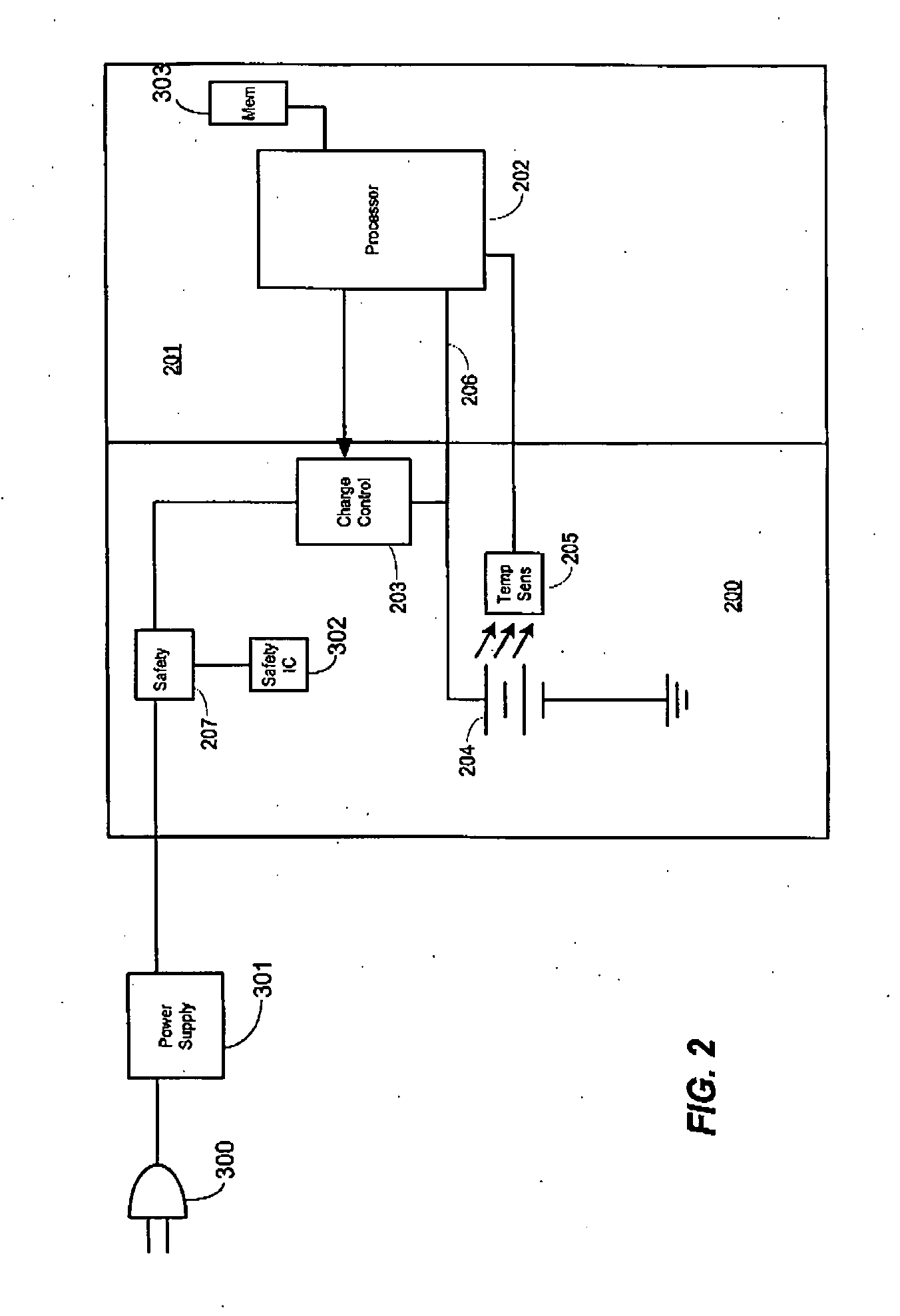Charging method for extending battery life in the presence of high temperature
a rechargeable battery and high temperature technology, applied in the direction of charging maintainance, charging/discharging, electric vehicles, etc., can solve the problems of reducing the ability to store and deliver electrical energy, affecting the life of the battery, and affecting the performance of the battery
- Summary
- Abstract
- Description
- Claims
- Application Information
AI Technical Summary
Benefits of technology
Problems solved by technology
Method used
Image
Examples
Embodiment Construction
[0009] A preferred embodiment of the invention is now described in detail. Referring to the drawings, like numbers indicate like parts throughout the views. As used in the description herein and throughout the claims the following terms take the meanings explicitly associated herein, unless the context clearly dictates otherwise: the meaning of “a,”“an,” and “the” includes plural reference, the meaning of “in” includes “in” and “on.”
[0010] A method of charging a battery is provided herein that adjusts the amount of energy stored within a battery's cells based upon a temperature profile across time. The inventors have determined that degradation of electrolyte and other cell components is a function of the amount of energy stored, battery temperature and the amount of time at which the cell is exposed to elevated temperatures. As such, this method reduces the amount of energy stored within a cell when it is exposed to elevated temperatures for extended periods of time.
[0011] Prior a...
PUM
 Login to View More
Login to View More Abstract
Description
Claims
Application Information
 Login to View More
Login to View More - R&D
- Intellectual Property
- Life Sciences
- Materials
- Tech Scout
- Unparalleled Data Quality
- Higher Quality Content
- 60% Fewer Hallucinations
Browse by: Latest US Patents, China's latest patents, Technical Efficacy Thesaurus, Application Domain, Technology Topic, Popular Technical Reports.
© 2025 PatSnap. All rights reserved.Legal|Privacy policy|Modern Slavery Act Transparency Statement|Sitemap|About US| Contact US: help@patsnap.com


